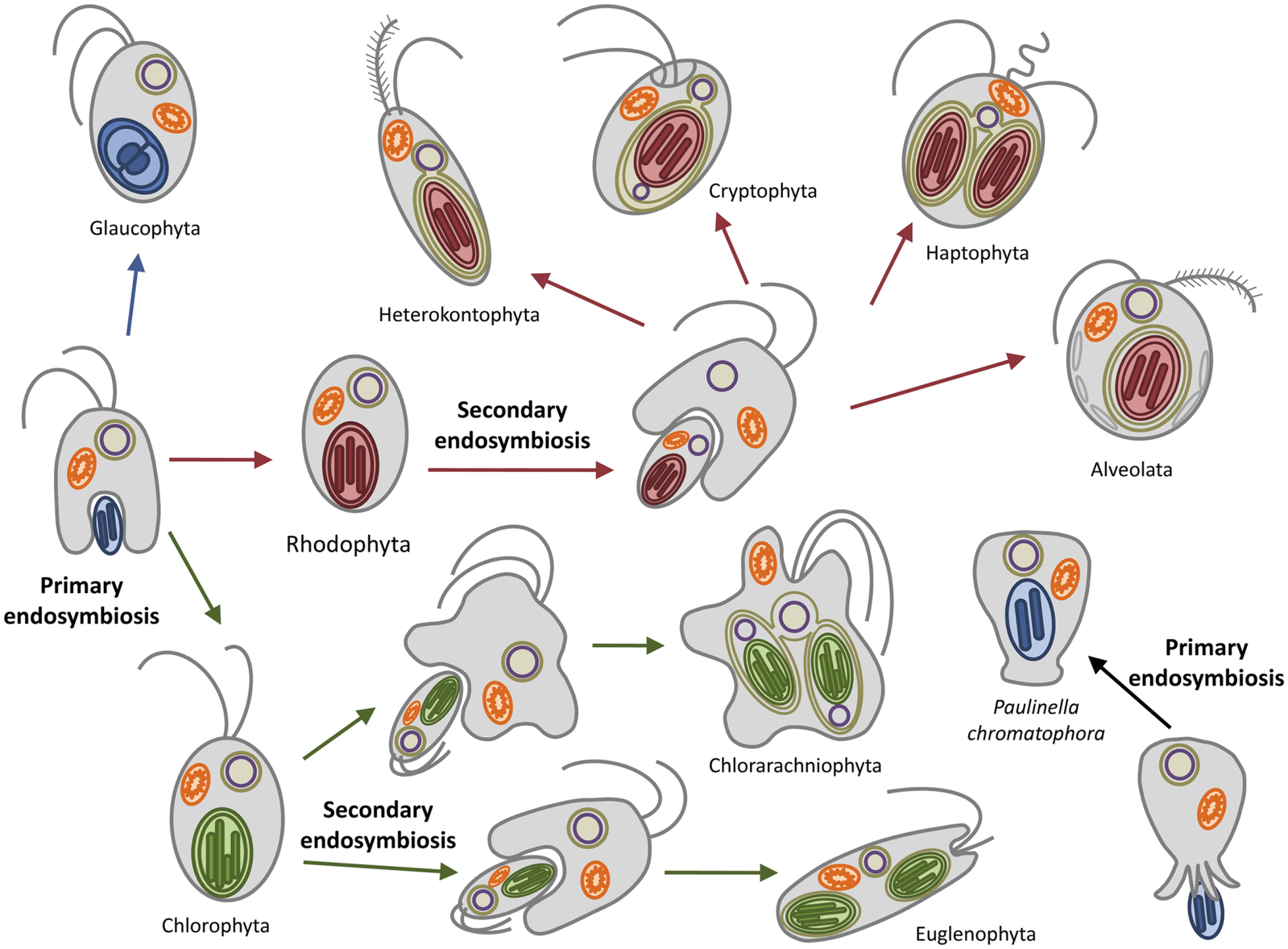2.4.4: Chapter Summary
- Page ID
- 37039
Protists are an artificial grouping representing all eukaryotic organisms that aren't plants, animals, or fungi. Because of this, the life history traits of protists span the breadth of what is possible. In this book, protists have been divided into heterotrophs and photoautotrophs. The heterotrophic protists use glycogen as a storage carbohydrate, have cellulose in their cell walls (when present), and many have a diplontic life cycle. Despite these latter two traits, they were all formerly classified as fungi. Photoautotrophic protists are the result of endosymbiotic events (Figure \(\PageIndex{1}\)). One lineage, including the diatoms and brown algae, derived from a secondary endosymbiotic event within the heterokonts. A second lineage, including the glaucophytes, red algae, and green algae, was derived from a primary endosymbiotic event. This latter lineage includes the ancestors of all land plants.

After completing this chapter, you should be able to...
- Explain how organisms were originally classified under Protista.
- Describe the diversity of metabolic strategies and other life history traits within this artificial group.
- Identify evolutionary relationships between "protists" using a phylogenetic tree.
- Differentiate between the three major groups of slime molds.
- Differentiate between slime molds, fungi, and plants.
- Identify structures and phases in the myxomycete life cycle and know their ploidy.
- Compare and contrast oomycetes with plants and fungi.
- Explain some of the roles oomycetes have in both terrestrial and aquatic ecosystems.
- Identify structures in the Saprolegnia life cycle and know their ploidy.
- Explore some of the ecological roles of dinoflagellates.
- Describe the symbiosis between corals and zooxanthellae.
- Explain what happens in a red tide.
- Use life history, morphology, and cellular components to identify brown algae.
- Identify the components of a kelp thallus.
- Identify structures and events in the Fucus life cycle and know their ploidy.
- Identify structures and events in the Laminaria life cycle and know their ploidy.
- Use life history, morphology, and cellular components to identify diatoms.
- Classify diatoms based on symmetry and ecology.
- Describe sexual and asexual reproduction in diatoms.
- Distinguish between different groups of algae using life cycle, morphological features, and cellular composition.
- Connect adaptations in the red and green algae to habitat characteristics and ecology.
- Identify structures and phases in the Polysiphonia and Spirogyra life cycles; know the ploidy of these structures.


